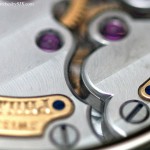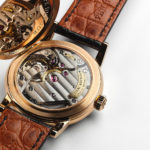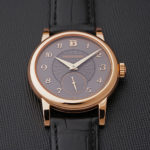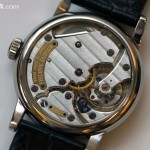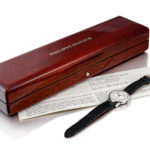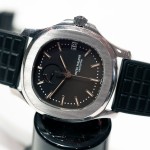Hands On: Philippe Dufour Simplicity Prototype No. 000 in Pink Gold
Capturing the essence of artisanal beginnings.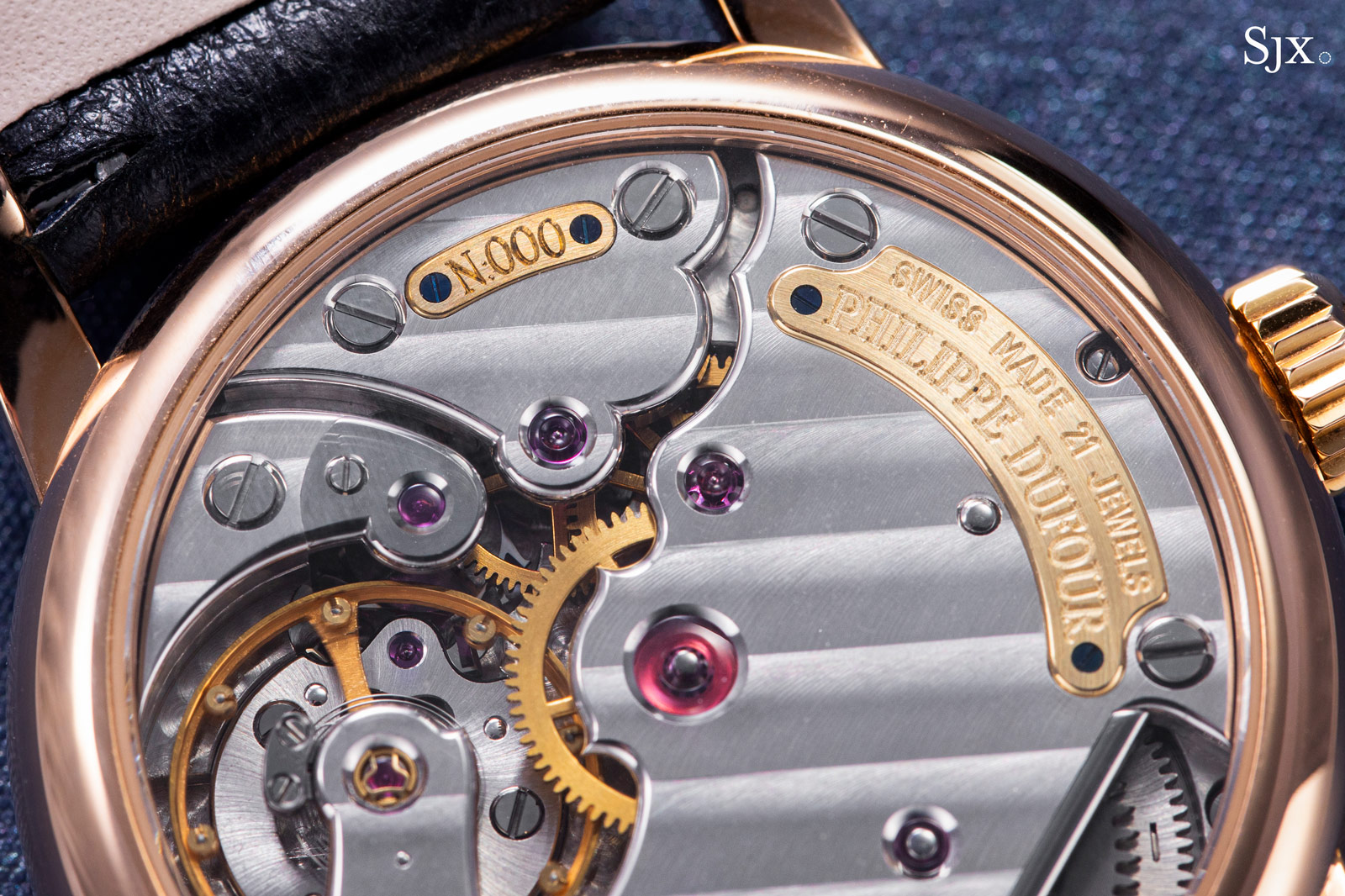
With “indies” all the rage now, auction catalogues usually have a generous helping of independent watchmaking. Amongst the many offerings from the genre this season, a handful stand out, including the Philippe Dufour Simplicity prototype no. 000 in Phillips’ Geneva watch auction that takes place on November 3 and 4, 2023.
This is one of three prototype watches Mr Dufour made for the 2000 Basel fair when the Simplicity made its debut. Two of them were in white gold with a silvered guilloche dial – Mr Dufour himself frequently wears one of them – and the last was this watch, which is pink gold with a white lacquered dial.
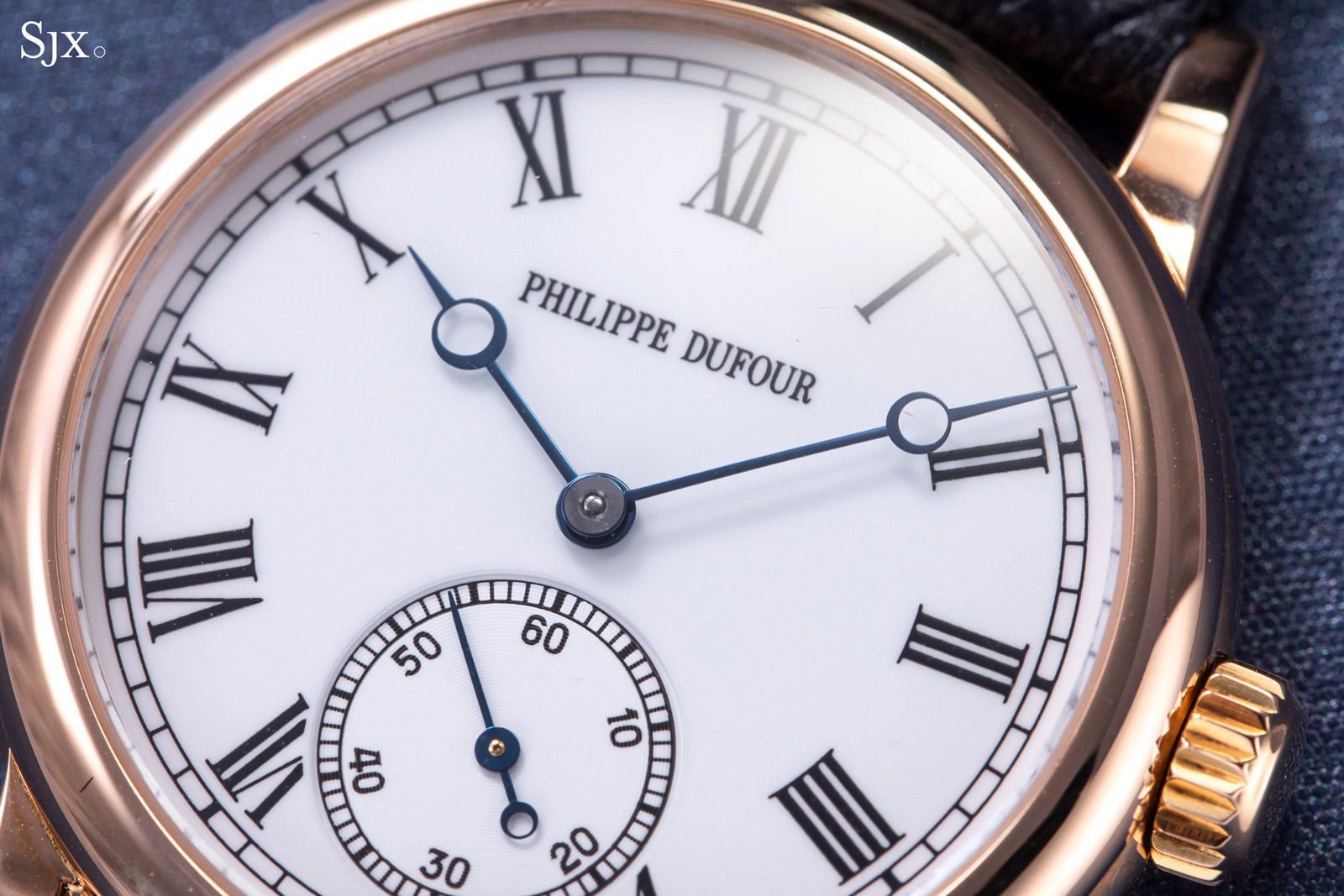
Initial thoughts
Today Philippe Dufour has grown beyond the personality and is essentially a brand, an evolution that arguably took place after the 20th anniversary Simplicity was launched 2020.
In contrast, this Simplicity prototype, along with the first 200 examples Mr Dufour made, encapsulates the artisanal beginnings of the man and his brand. At the time of the Simplicity’s launch, and for more than a decade after, Mr Dufour found neither fame nor fortune, given that he only made a handful of Simplicity watches each year and sold each for about US$40,000.
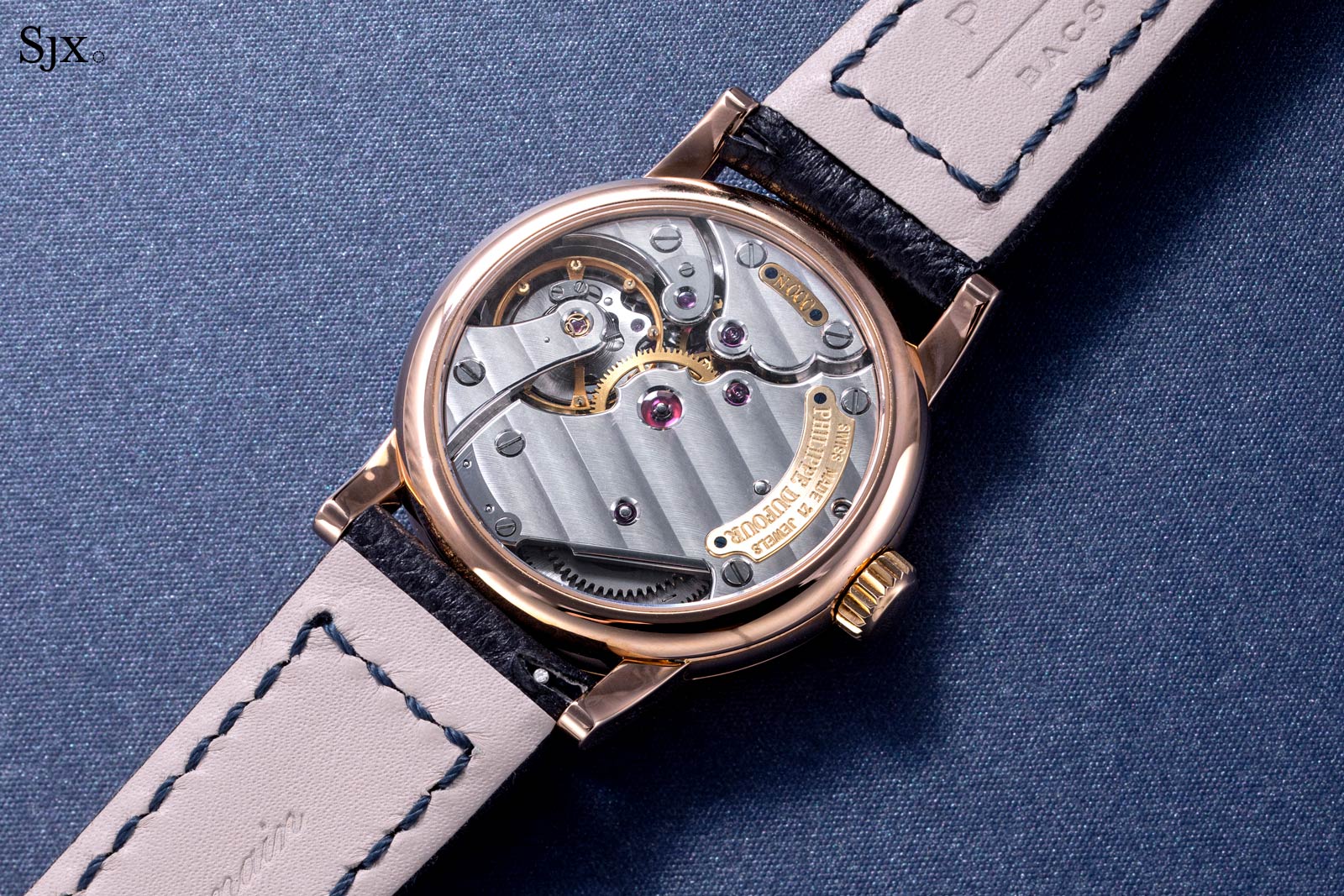
The early watches are perhaps purer creations that capture the essence of Mr Dufour’s vision, which was to pay tribute to the heyday of Vallee de Joux watchmaking. Mr Dufour, of course, managed to do it slightly better, explaining why his creations are often regarded as having the best movement decoration in modern watchmaking. The prototypes, of course, perhaps best exemplify that philosophy.
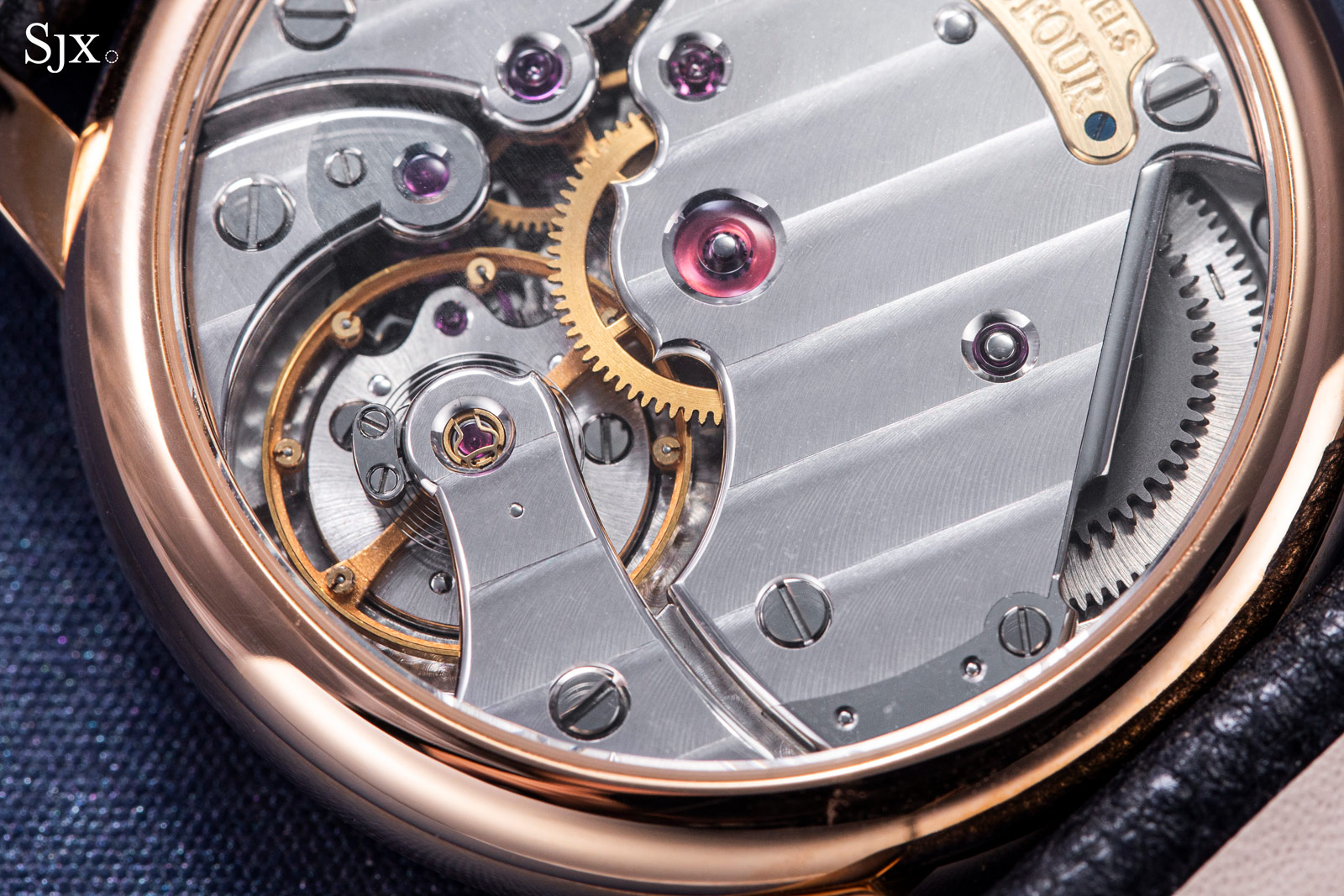
“000”
Mr Dufour retained one of the white gold prototypes, with the other going to Yoshi Isogai, the president of Shellman, which was Mr Dufour’s distributor in Japan and also the first retailer to commit to selling Philippe Dufour. The country was by far the biggest market for the Simplicity, with an estimate of half of the original 200-piece run sold to Japanese clients.
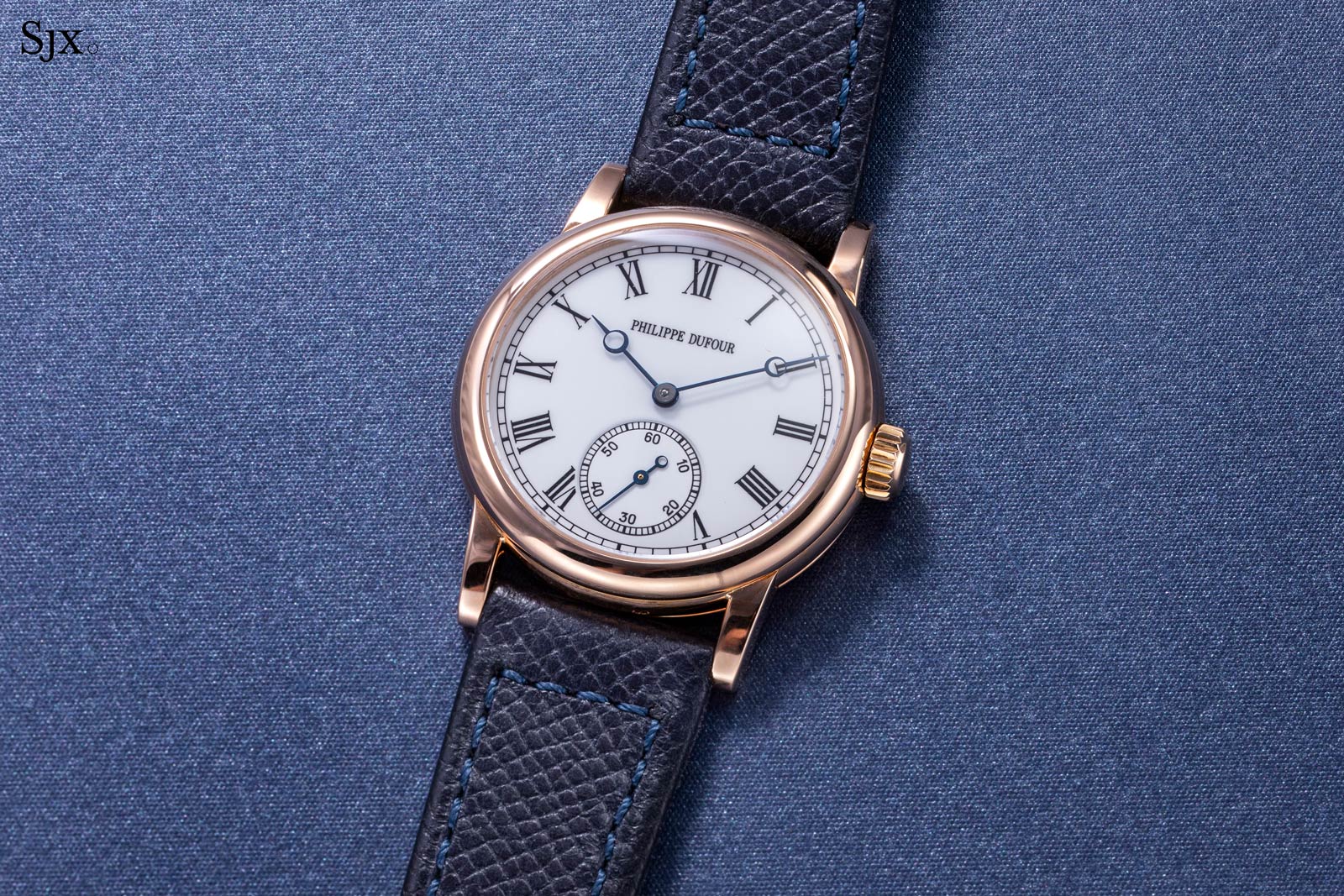
Unsurprisingly, the pink gold prototype also went to Mr Isogai and sat on display in his Ginza store alongside vintage Patek Philippe and watches by other independent watchmakers, including Svend Andersen and Jean-Daniel Nicolas. According to Phillips, the current owner of the watch convinced both Messrs Isogai and Dufour to sell the prototype in 2016, after the original 200-piece run of the Simplicity ended around 2012.
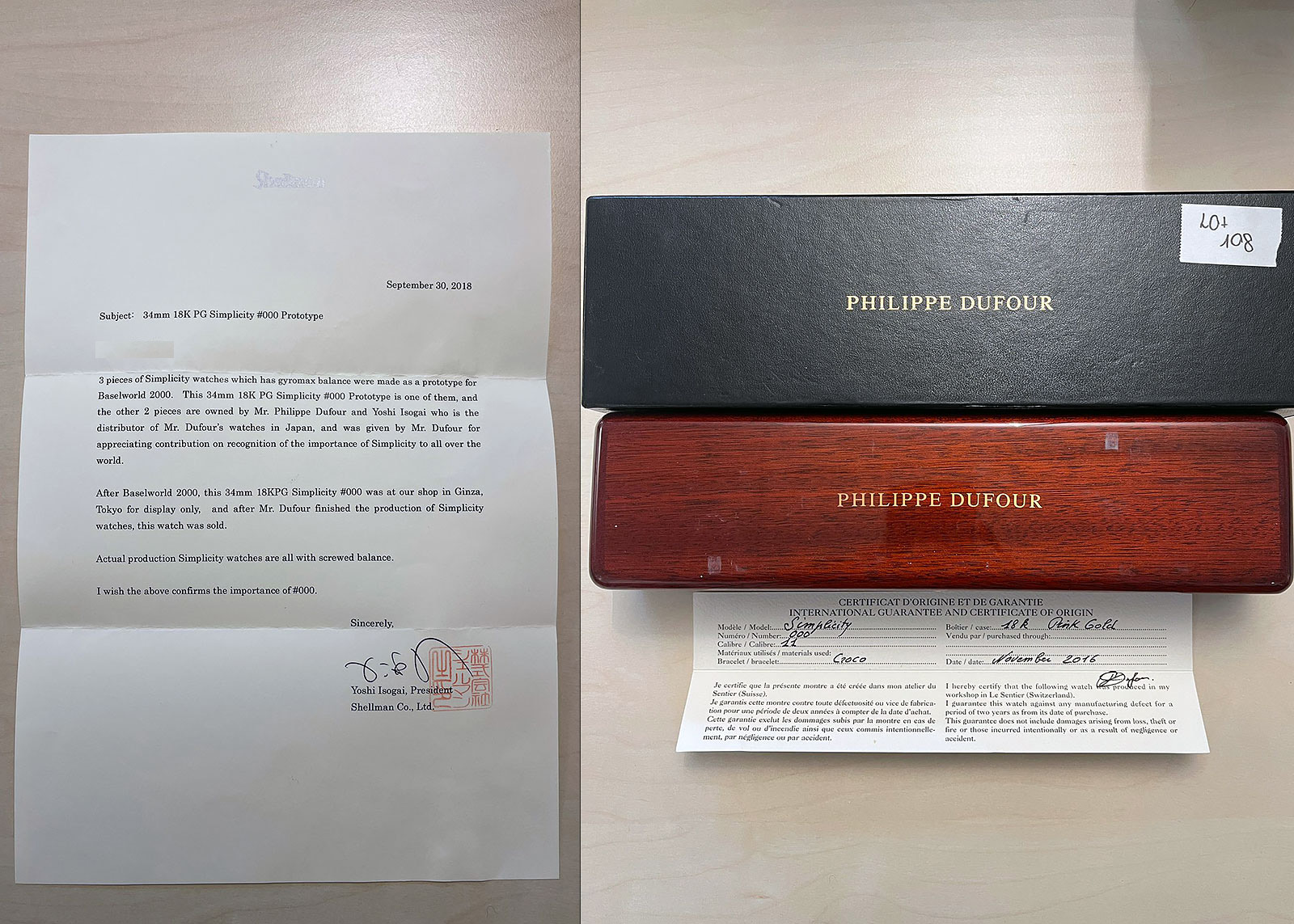
The box, certificate, and letter from Mr Isogai explaining its history. Image – Phillips
This pink gold prototype shares the same features that distinguish the white gold prototypes, making the three watches distinct from the Simplicity watches that were produced after.
The most obvious point of difference is the balance wheel. While the regular production version features a screwed balance like those found in mid-century watches that inspired the Simplicity, the prototypes are equipped with Gyromax balance wheels sporting ring-shaped regulating weights. With Gyromax being unique to Patek Philippe, it can be safely assumed Mr Dufour relied on Patek Philippe spare parts for the balance wheels of the prototypes.
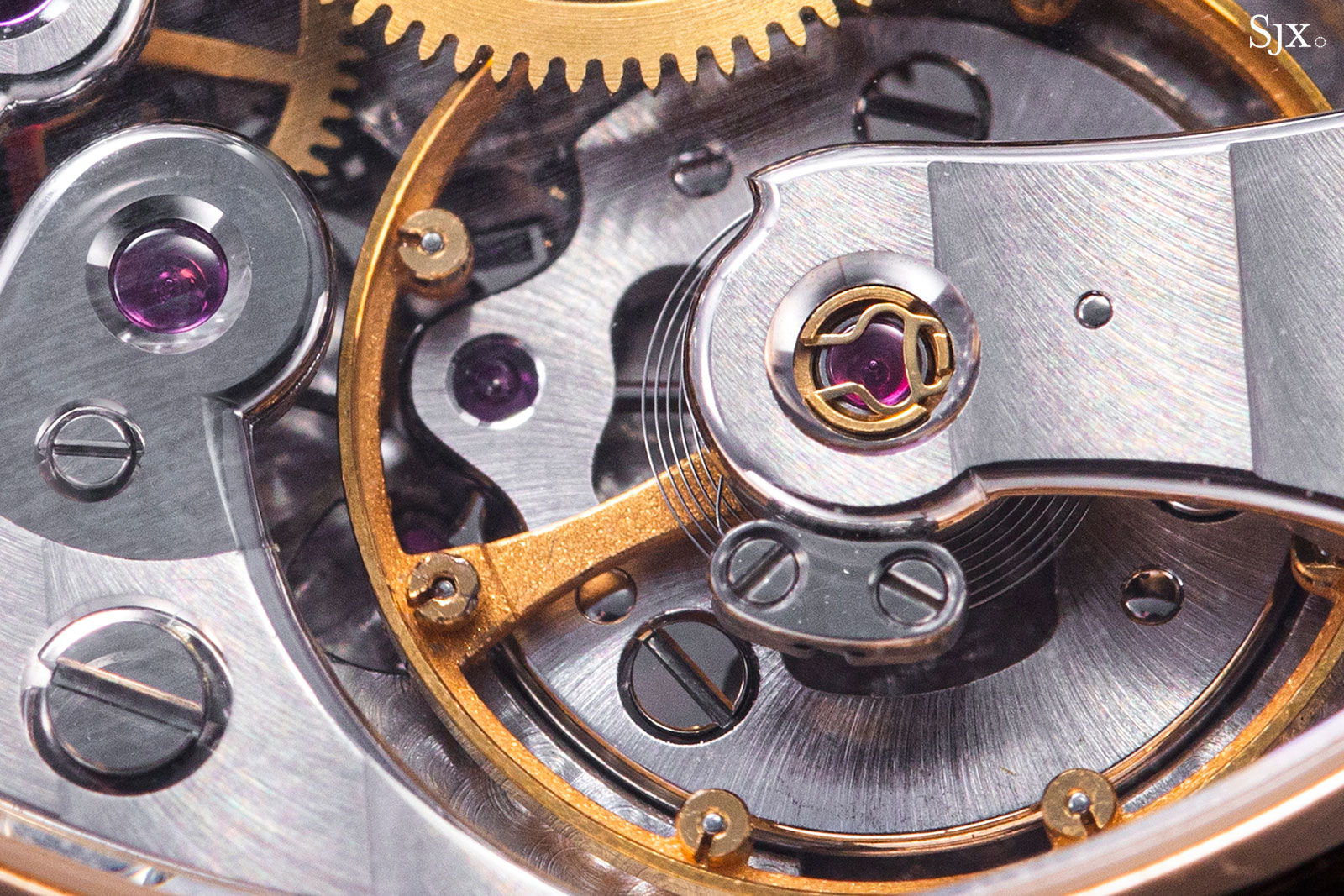
The Gyromax balance wheel with its characteristic circular weights
Another difference on the solid-gold plate bearing the brand name. The standard watches feature hand-engraved plates, whereas here only the serial number is hand engraved. The other plate has the brand name and jewel count engraved with laser.
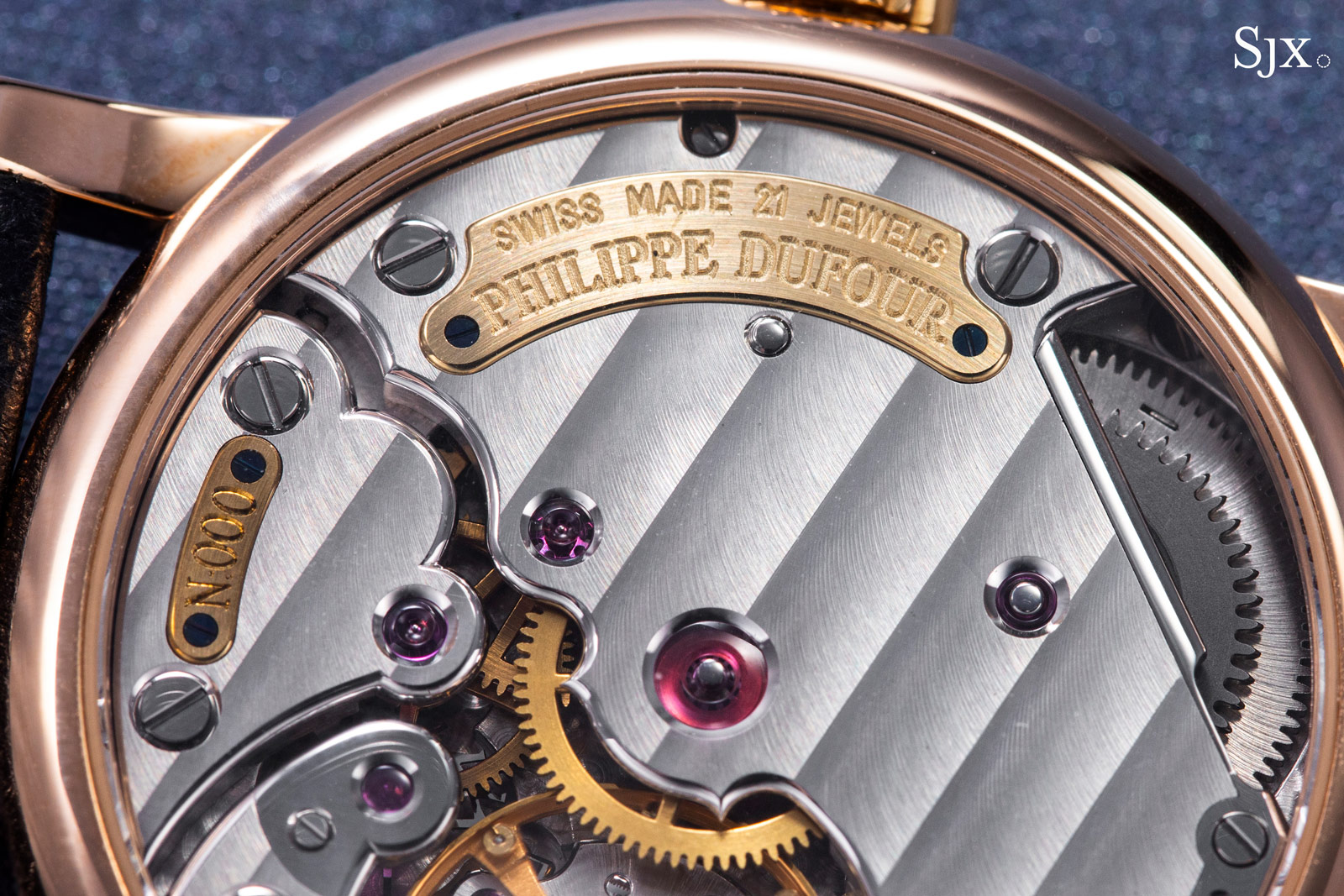
The engraving on the larger gold plate has the soft form of laser engraving
Other changes are more subtle. On the regular production watches, the bridge for the third and fourth wheel has a cutout on its outer edge to accommodate the base plate screw, but the bridge on the prototype covers the screw. Adding the cutout is actually a decorative flourish as it requires extra work to bevel its edge and corners.
And even more subtle is the screw holding the black polished escape wheel cap. Here it sits in a countersink, while in the standard model the screw is flush with the steel cap, giving it an unbroken, mirrored surface.
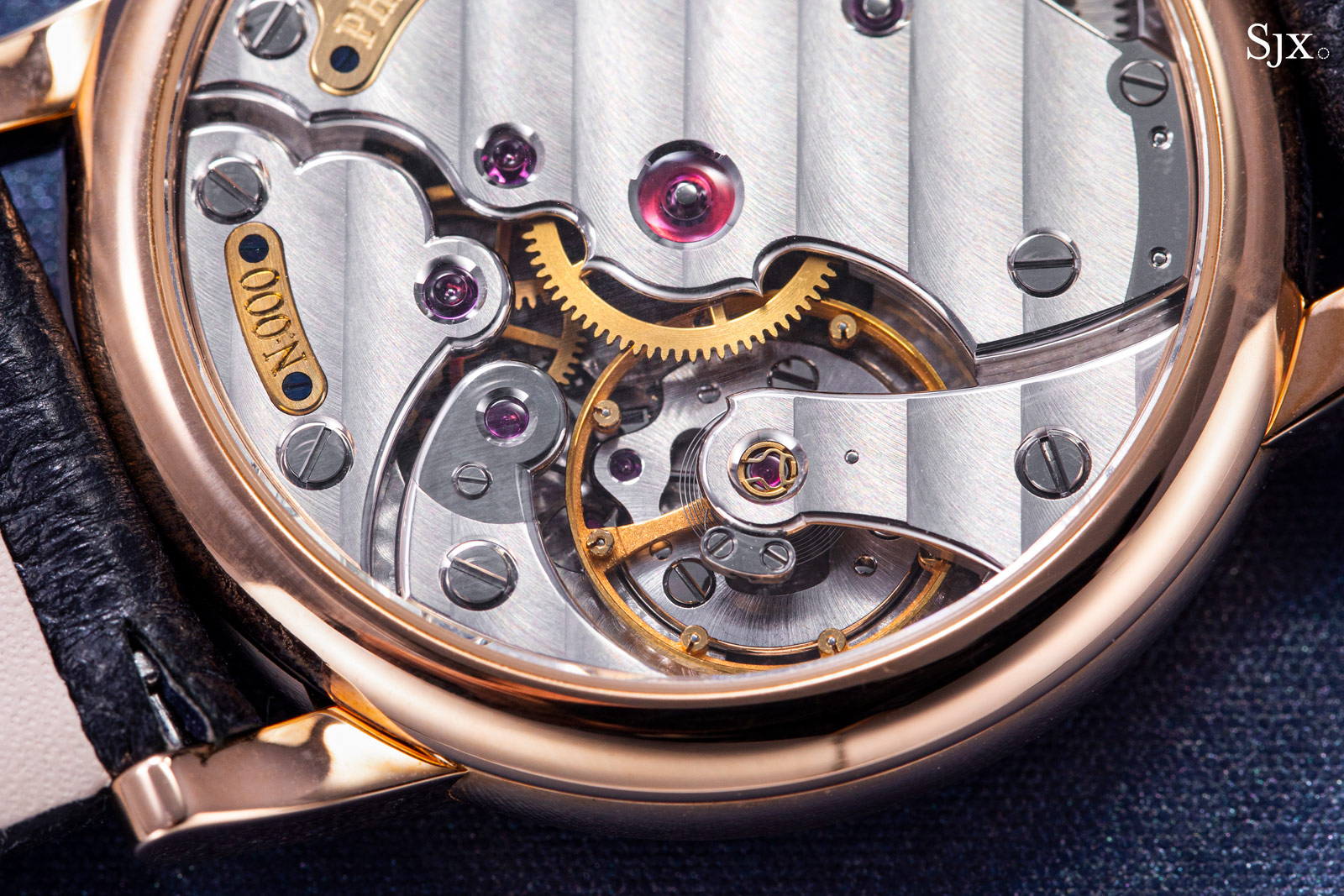
The screw for the steel cap sits in a countersink
Several changes can also be found on the dial. Besides the lack of “Metalem” at six o’clock (which is the name of the dial maker), the prototype dial also has a concentric pattern on the subsidiary seconds that looks out of place against the lacquered finish. This was rectified on the production models that have a uniformly lacquered finish across the whole dial.
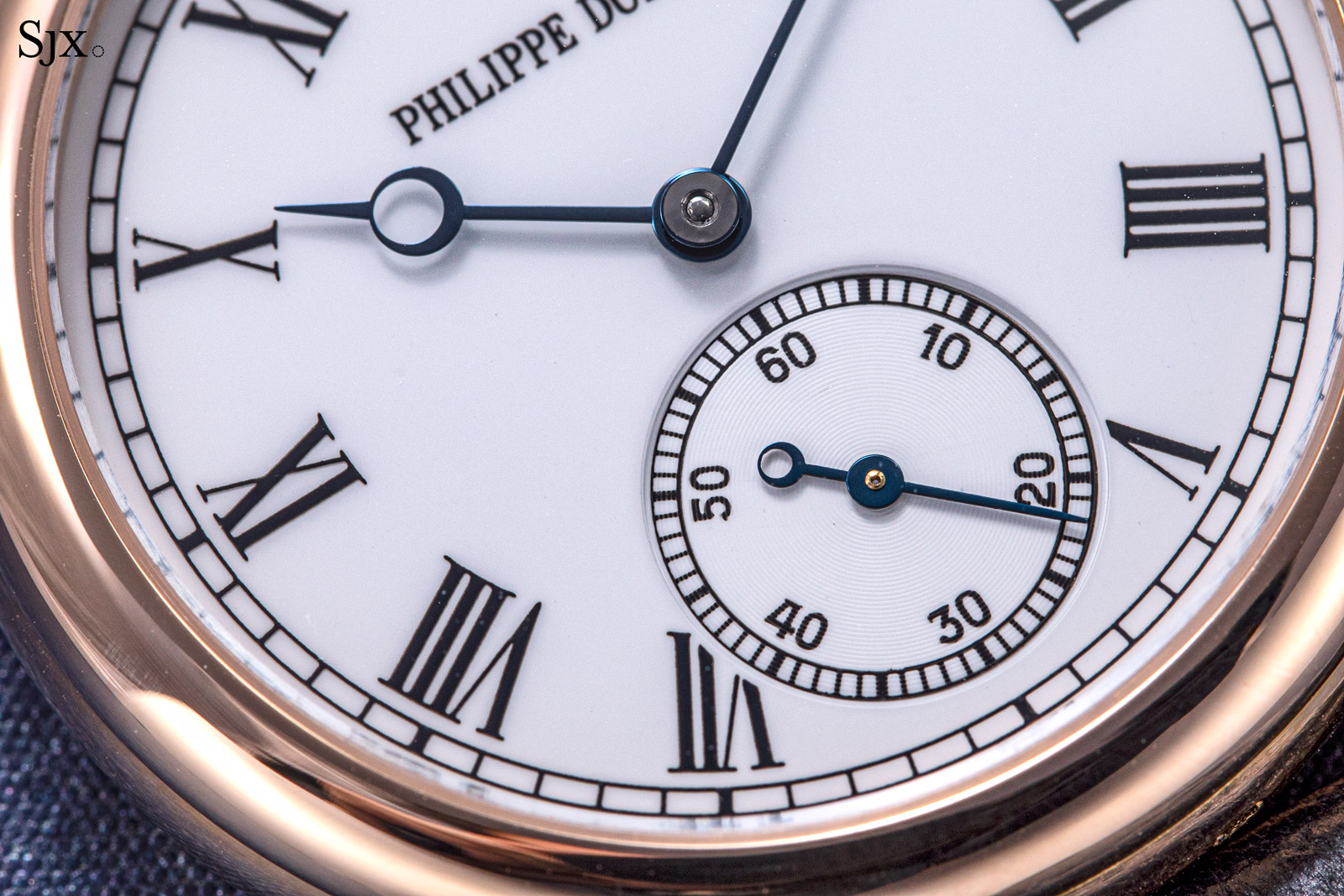
The concentric pattern on the seconds is apparent only up close
The Simplicity prototype is accompanied by its box, certificate, and letter from Mr Isogai detailing its history. For more on the prototype, which has an estimate of CHF400,000-800,000, visit Phillips.com.
This was brought to you in partnership with Phillips.
Back to top.

